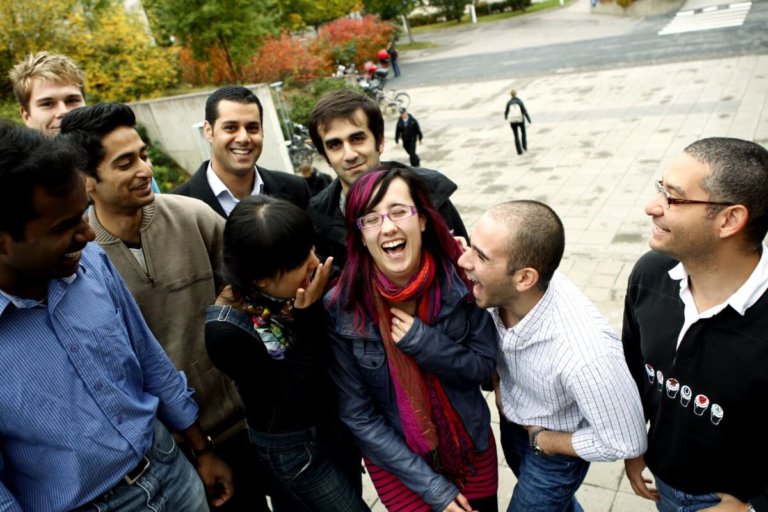
Technology is fundamentally transforming how businesses operate and how we communicate with each other. Computing is present in every aspect of our lives: at home, at work, when we travel, in consumer behaviour and in our environment.
The technology boom has given rise to new products, apps, websites and technological innovations that are being developed. Novel interaction techniques can make use of our sensory capabilities for enjoyable and effective use of technology. It is essential to focus on user experience design and how humans interact and engage with these products. Such skills will make a big difference in terms of acceptability of novel interactive technologies.
User experience research and human-centered design are vital approaches to making technological innovations commercially successful. Enthusiastic professionals are needed in this domain to design and develop user-friendly, innovative and engaging products and services that are also sustainable and ethical.
At Tampere University in Finland, students can undertake specialised graduate degrees that equip them with the know-how and expertise needed to design and develop novel types of technological products and services.
Developing innovative experts in human-technology interaction
In the Master of Science in Computing Sciences, Human-Technology Interaction and Master of Science (Technology) in Computing Sciences, Human-Technology Interaction programmes, students receive a broad education in human-computer interaction, design of technology-mediated applications and services, and related research approaches.

Tampere University
These tracks are two of the seven tracks in the Master’s degree programme in Computing Sciences, a new degree programme starting in August next year.
Through the human-computer interaction tracks, students learn the latest topics on digital service design, user experience evaluation, user psychology, human-centered software development, usability engineering, multimodal human-computer interaction and research skills.
The track also educates students in the design and development of user interfaces for mobile and desktop applications, virtual reality, augmented reality, industrial machinery and human-robot interaction.
Along with that, the studies prepare students for the real working world through opportunities to work with professionals from different fields, as human-technology interaction is a multi-disciplinary subject.
The technology industry is global, with products being delivered and used all over the world. Human-technology interaction experts must consider how users from different cultures can adopt these products and services. That’s why students are encouraged to work with peers from various cultures and explore principles of cross-cultural design.
Upon graduation, students will master the main theories and practices related to the user experience of interactive technological products and services. Students will also have learned the basics of scientific thinking and writing.
These tracks prepare students for working life, equipping them with transferrable skills such as teamwork, multidisciplinary and multicultural communication, presentation, argumentation, critical information search and reflection.
Students graduating with a master’s degree from the human-technology interaction track will be a great asset to companies looking for experts who can account for the user needs and characteristics and design for human-technology interaction.
Cutting-edge research in human-technology interaction
Human-technology interaction is a strong research field in Tampere University. Master’s students can find opportunities to pursue training in research units and applying their knowledge to leading-edge research in the field.
In the TAUCHI Research Center, research is focused on new interaction technologies and multimodal interaction making use of all human senses. For example, gaze tracking, haptics, gestures and virtual reality technologies are combined in enabling totally new ways for interaction in different application areas. In a more practical topic, student have developed public transportation information services that are accessible on mobile phones using spoken dialogue. Researchers have also developed methods that can utilise signals extracted from the human body for predicting emotional experiences. The research also aims to support special user communities, such as children, elderly people and users with disabilities.

Tampere University
In the Human-Centered Technology (IHTE) research group, several projects address user needs and user experience of societally relevant digital solutions. IHTE researchers study current topics such as digital platforms for youth participation, social robot interaction for schools and human-centered artificial intelligence for the smart city. Emphasis is on digital solutions that advance sustainability of our future society.
Students in the human-technology interaction study tracks at Tampere University have the opportunity to become valued leaders in this important computer science field, making technology more accessible, enjoyable and effective in our everyday lives.
Follow Tampere University on Twitter, YouTube and LinkedIn
Liked this? Then you’ll love…
Stay relevant with a degree in electrical engineering from Tampere University
Computer science studies that lead to expertise in big data and machine learning







